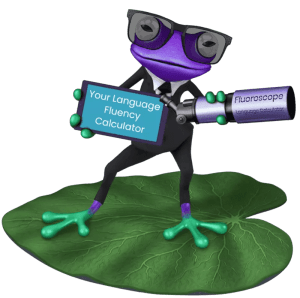Virtual Presentation Techniques for ELLs: Leveraging Technology

In our ever-evolving world of digital innovation and global connectedness, communication has transcended the realm of physical interactions. Delivering effective virtual presentations has become not just a desirable skill, but a crucial one. The shift towards remote work, digital learning, and online conferences demands the ability to express ideas, relay information, and persuade audiences in a virtual setting.
However, for English Language Learners (ELLs), the task of delivering a virtual presentation can be a significant challenge. ELLs are still navigating their journey towards English language mastery. To communicate efficiently in a virtual space, they must tackle hurdles such as pronunciation, vocabulary, fluency, and understanding the cultural undertones of the language. The virtual context adds further layers of complexity – handling technical features, engaging with an unseen audience, and confidently traversing the digital world.
On the bright side, the technological revolution that necessitates the demand for virtual presentations also offers a myriad of tools to help ELLs surmount these challenges. Innovative solutions range from AI-driven language learning platforms to presentation software equipped with real-time language assistance. These advancements can substantially aid ELLs in enhancing their virtual presentation skills.
In this article, we’ll explore the world of virtual presentations techniques, the challenges faced by ELLs, and how the power of technology can be harnessed to help them excel. Stay tuned as we navigate this intriguing topic.

Benefits of Reading This Article
Navigating through this article will provide you with a treasure trove of benefits, especially for those of you on a quest to conquer the English language:
- Understanding the Digital Transformation: This piece explores the growing importance of virtual presentations in our increasingly digital world, providing context and implications for English language learners.
- Addressing Unique Challenges: For English Language Learners, virtual presentations can present unique hurdles. This article highlights these issues, promoting awareness and understanding.
- Role of Technology: Discover how the evolution of technology can be leveraged to support language learners in enhancing their virtual presentation skills.
- Platform Familiarity: Learn about various platforms and tools that can aid in delivering impactful virtual presentations, including Lillypad.ai, a powerful AI-driven English language tutor.
- Practical Application: Not just theoretical understanding, this article emphasizes real-world applications and strategies, helping learners to put their knowledge into practice.
- Cultural Sensitivity: Recognizing that language and culture are intrinsically linked, the article underscores the importance of understanding English-speaking cultures, traditions, and customs.
- Utilizing Lillypad.ai: The article highlights the usefulness of Lillypad.ai, a cutting-edge language learning tool, in helping learners speak 25,000+ English words per month with just 20 minutes of practice a day.
- Boosting Confidence: With Lillypad.ai, learners can grow their confidence, career, or grades. This article underscores how the application can assist learners in saving significant time and money, and achieving their language goals more quickly.

Importance of Virtual Presentation Skills for ELLs
Relevance of Virtual Presentation Skills in Diverse Contexts
Whether you’re an ELL student presenting a project in an online class or a professional pitching ideas in a virtual meeting, the importance of virtual presentation skills cannot be overstated. With globalization and digital transformation in full swing, the ability to communicate effectively in a virtual setting has become a fundamental skill. Regardless of your field or interest, the likelihood is high that at some point, you’ll need to convey ideas, arguments, or information to others in a virtual format. Mastering virtual presentation skills can prepare you for these situations, ensuring that you’re able to express yourself clearly and compellingly, no matter the platform or distance between participants.
Advantages of Enhancing Virtual Presentation Skills for ELLs
For English language learners, the advantages of honing virtual presentation skills are numerous. To start, it provides a great platform to practice English in a structured, meaningful way. During a presentation, you need to employ a range of English language skills, including vocabulary use, pronunciation, and grammatical structures, all while following a coherent narrative thread. This makes it a comprehensive, practical exercise in language use. Additionally, strong virtual presentation skills can boost your confidence, helping you feel more at ease when using English in other contexts.
Real-life Impact of Virtual Presentation Skills on ELLs’ Careers and Education
Let’s look at a few examples to see how virtual presentation skills can create positive impacts in various career paths.
- Rajeev Das, the Business Consultant: Rajeev is an ELL from India working for an international consultancy firm. His ability to deliver compelling, well-structured virtual presentations has allowed him to communicate complex business strategies effectively to global clients, leading to several successful projects and a rapid rise within the company.
- Maria Segovia, the Online Educator: Maria, an ELL from Mexico, transitioned from traditional teaching to online education. Her virtual presentation skills helped her create engaging, educational content for her students worldwide, and her clear, effective communication style has led to positive feedback and a growing student base.
- Jason Chen, the Research Scientist: Jason, an ELL from China working in a multinational pharmaceutical company, regularly presents research findings to a global audience. His strong virtual presentation skills allow him to communicate complex scientific data effectively and convincingly, contributing to the company’s research advancements and earning him recognition in his field.
These examples highlight the crucial role that virtual presentation skills can play in ELLs’ career development and advancement. It’s clear that mastery of these skills can open doors to opportunities, fostering success in our increasingly digital world.

Challenges Faced by ELLs in Virtual Presentations
1. Language Proficiency Challenges: Pronunciation, Grammar, and Confidence
English language learners often face challenges in three key areas when it comes to virtual presentations: pronunciation, grammar, and confidence.
Pronunciation is an integral part of effective communication. Mispronunciation of words can lead to misunderstanding or miscommunication. Moreover, certain sounds in English can be particularly difficult for ELLs, especially if those sounds do not exist in their native language.
Grammar can pose another challenge. The intricacies of English grammar can be difficult to navigate, especially during a presentation where the focus should be on the delivery of the content rather than the correctness of the language.
Finally, confidence is essential in delivering an effective presentation. However, ELLs might feel less confident due to a perceived lack of language proficiency. This lack of confidence can affect the overall delivery of the presentation, as the presenter may be too focused on their insecurities about language proficiency to effectively convey their message.
2. Cultural and Non-verbal Communication Challenges: Understanding Audience Expectations and Adapting Communication Styles
Understanding cultural nuances and non-verbal communication can be challenging for ELLs.
Cultural norms can greatly influence how presentations are received. For instance, the level of formality, use of humor, and how to address disagreement can all vary across different cultures. Therefore, ELLs need to be mindful of their audience’s cultural norms to ensure their presentation is appropriate and effective.
Non-verbal communication, including body language, facial expressions, and gestures, also plays a vital role in presentations. However, these non-verbal cues can be challenging to interpret and employ correctly for ELLs, particularly in virtual environments where visual cues may be limited.
3. Technical Challenges: Overcoming Issues Related to Technology, Audio Quality, and Visual Aids Usage
Technical challenges can pose significant obstacles for ELLs in virtual presentations.
Issues with technology can range from unstable internet connections to difficulties with presentation software. These can disrupt the flow of a presentation and make it more difficult for the presenter to keep the audience engaged.
Audio quality is crucial in virtual presentations, as clear sound is essential for understanding. ELLs might struggle with microphones that do not capture their voices clearly, making it difficult for the audience to understand their speech.
Visual aids, like slides or videos, can greatly enhance a presentation by providing visual reinforcement of spoken content. However, using these effectively requires a degree of technical skill that can be challenging for ELLs to master.
Addressing these challenges is crucial for ELLs to deliver effective virtual presentations. By focusing on improving language proficiency, understanding cultural and non-verbal communication norms, and overcoming technical hurdles, ELLs can significantly enhance their virtual presentation skills.

Leveraging Technology to Improve Virtual Presentation Skills
Navigating the digital realm of virtual presentations can be challenging. Still, the good news is that technology, which presents some of these challenges, also provides the means to overcome them. Let’s explore how technology can support ELLs in honing their language proficiency, improving their non-verbal communication, and enhancing their technical skills.
1. Language Proficiency Enhancement
Improving language proficiency can seem like an uphill battle, but the strategic use of technology can turn it into an enjoyable journey.
One tool to consider is speech recognition technology. This software provides pronunciation practice and immediate feedback, allowing learners to rectify their mistakes instantly. It’s like having a personal pronunciation coach!
Artificial Intelligence (AI) has also transformed language learning. Platforms like Lillypad.ai use AI technology to provide tailored learning experiences, helping learners to improve their grammar, vocabulary, and sentence structure through adaptive exercises and content.
Finally, adopting strategies like deliberate and spaced repetition practice can enhance language skill development. These methods, often integrated into language learning apps, help embed language elements more deeply into memory, facilitating long-term retention and recall.
2. Non-Verbal Communication Improvement
Non-verbal communication is as vital as verbal communication in a presentation. Luckily, technology provides ample opportunities to practice and improve these skills.
Video conferencing tools offer ELLs a virtual platform to practice eye contact, body language, and facial expressions. These platforms often come with recording features, enabling self-review and improvement over time.
Furthermore, virtual reality applications provide immersive experiences that simulate real-life presentation scenarios. This virtual practice can help alleviate nerves and improve performance in actual presentations.
Moreover, interactive feedback tools, like those incorporated into Lillypad.ai, can provide real-time feedback on non-verbal cues and offer suggestions for improvement. This immediate feedback enables learners to make on-the-spot corrections, facilitating rapid improvement.
3. Technical Proficiency Enhancement
In the digital age, being technically proficient is a non-negotiable skill, especially for virtual presentations.
Familiarity with virtual presentation software and tools is the first step. It’s important to understand both basic and advanced features of these tools to deliver seamless presentations.
Addressing technical challenges is also crucial. This can involve learning how to troubleshoot common audio/video issues, which can minimize disruptions during presentations.
Lastly, using visual aids effectively can significantly enhance a presentation’s impact. Incorporating slides, graphics, and multimedia elements adds visual interest and reinforces your points, helping to keep the audience engaged.
Overall, leveraging technology effectively can greatly enhance ELLs’ virtual presentation skills, turning potential stumbling blocks into stepping stones for success.

Effective Slide Design for Virtual Presentations
Slides can make or break a presentation. They’re not just background decorations but powerful tools that can amplify your message and engage your audience. Let’s look at some strategies to create slides that add value to your virtual presentations.
1. Tips for Creating Visually Appealing and Effective Slides
- Focus on the essentials: Each slide should focus on a single point or idea. Avoid the temptation to cram too much information onto one slide.
- Simplicity rules: Keep your slides clean and uncluttered. An overly complicated slide distracts your audience and detracts from your message.
- Use high-quality images: Use clear, high-resolution images to support your content. Remember, an image is worth a thousand words!
- Colors matter: Choose colors that are pleasing to the eye and contribute to the readability of your content.
- Whitespace is your friend: Allow for plenty of whitespace on your slides to give your content room to breathe.
2. Using Consistent Branding and Color Schemes
A consistent brand and color scheme can make your presentation look professional and visually cohesive. For example:
- Apple uses a minimalist design and a monochromatic color scheme, sticking to shades of grey and black. This design style echoes their product design ethos.
- Google uses a vibrant and simple design approach. Its slides often reflect the colors of its logo: blue, red, yellow, and green.
- Starbucks, known for its green logo, frequently uses a mix of green shades in its presentations, along with neutral colors like black and white for contrast.
3. Organizing Content in a Clear and Visually Pleasing Manner
Organizing content in your slides is crucial for readability and comprehension. Divide your content into logical sections or bullet points. Use headings and subheadings to guide the viewer’s eye and create a visual hierarchy of information.
4. Selecting Appropriate Fonts and Font Sizes for Readability
Choose fonts that are easy to read and suitable for your presentation style. Typically, sans-serif fonts like Arial, Helvetica, or Calibri are preferred for slides as they display well on screen. Also, keep your font size large enough for easy reading, typically between 24 and 32 points.
5. Incorporating Visuals, Charts, and Graphs to Support Key Points
Visuals such as images, charts, and graphs can make complex information more digestible and engaging. They can help emphasize key points, illustrate concepts, and provide visual interest.
6. Avoiding Overcrowding Slides with Too Much Text or Unnecessary Information
Finally, avoid the common mistake of overcrowding your slides with text. Slides are meant to support your spoken content, not repeat it verbatim. Keep your text concise, and remember to leave plenty of whitespace for a clean and easy-to-read design.

Strategies for Overcoming Language Proficiency Challenges in Virtual Presentations
As English Language Learners (ELLs), presenting virtually in English can seem daunting. However, with the right strategies and tools, these language proficiency challenges can be conquered, boosting confidence and improving communication. Let’s explore some of these techniques.
1. Breaking Down Language Barriers Through Extensive Vocabulary and Phrase Usage
Expanding your English vocabulary and understanding how phrases are used in different contexts can significantly improve your presentation skills. Start by learning topic-specific vocabulary relevant to your presentation. Also, get comfortable using common phrases and idioms as they can help you sound more fluent and confident.
2. Improving Pronunciation Through AI-powered Tools and Feedback
Accurate pronunciation is crucial for clear communication. AI-powered tools like Lillypad.ai can provide interactive pronunciation exercises and instant feedback, helping you perfect your pronunciation over time. They can highlight problem areas and offer corrective suggestions, making it easier to master tricky English sounds.
3. Utilizing Effective Sentence Structures and Grammar Rules
Proper grammar and effective sentence structures are the backbone of clear and concise communication in English. Here are some tips to help you:
- Understand and apply basic English grammar rules.
- Practice using different sentence structures, including simple, compound, and complex sentences.
- Avoid run-on sentences that can confuse listeners.
- Use transitional words and phrases to connect your thoughts and ideas smoothly.
- Revise your sentences for clarity and brevity.
4. Tips for Boosting Confidence in Using English During Virtual Presentations
Confidence can make a significant difference in the effectiveness of your presentation. Here are some tips to boost your confidence:
- Prepare and practice: Prior preparation prevents poor performance. Practice your presentation multiple times to familiarize yourself with the content and flow.
- Use tools for support: Use AI-powered tools like Lillypad.ai for practicing pronunciation, improving vocabulary, and getting real-time feedback.
- Seek constructive feedback: Ask peers or mentors to critique your presentation. Use their feedback to improve.
- Engage in English language social activities: Participate in English-speaking groups, online forums, or social networks to improve your comfort level with English.
- Embrace mistakes: Understand that making mistakes is part of the learning process. Rather than fearing them, use them as stepping stones to improvement.

Tips for Effective Virtual Presentation Delivery
Giving an effective virtual presentation goes beyond having great content. It involves mastering the art of delivery to engage your audience and convey your ideas convincingly. Here are some tips to help you deliver an impactful virtual presentation.
1. Engaging the Audience Through Storytelling and Captivating Opening Statements
Storytelling is a powerful tool that can make your presentation more engaging and memorable. Start your presentation with a compelling story or an intriguing statement related to your topic. This approach not only grabs your audience’s attention but also helps to establish a personal connection with them.
2. Structuring Presentations for Clarity and Coherence
A well-structured presentation is easy to follow and understand. Begin with a clear introduction where you outline what the audience should expect from your presentation. Follow this with a logically organized body where you discuss your main points in detail. Lastly, conclude with a summary of key points and your final thoughts. Always remember, clarity is king!
3. Maintaining a Conversational Tone and Avoiding Overuse of Jargon
A conversational tone can make your presentation more relatable and less intimidating for your audience. Try to sound like you’re having a conversation with a friend, rather than giving a formal lecture. Additionally, avoid overusing jargon or technical terms that your audience may not understand. If you need to use technical terms, ensure to define them for your audience.
4. Encouraging Audience Participation and Interaction
Audience participation can make your presentation more dynamic and engaging. Encourage your audience to ask questions, share thoughts, or participate in polls or quizzes. You can also use interactive tools like Lillypad.ai’s interactive features to facilitate real-time audience engagement. Remember, the more your audience is engaged, the more they’ll take away from your presentation.

Handling Question and Answer Sessions in Virtual Presentations
Question and Answer (Q&A) sessions are a critical part of any presentation. They provide an opportunity for the audience to seek clarifications and discuss the presentation topic in depth. This section will provide some strategies and techniques for handling Q&A sessions in virtual presentations effectively.
Strategies for Understanding and Responding to Questions Effectively
To handle questions effectively, consider these tips:
- Listen carefully to the question and take a moment to formulate your response.
- Paraphrase the question to ensure you’ve understood it correctly.
- If you don’t know the answer, it’s okay to admit it. You can always follow up after the presentation.
- Keep your responses concise and to the point.
- Use examples or anecdotes to clarify complex points.
Techniques for Managing Nerves and Maintaining Composure during Q&A Sessions
Handling a Q&A session can be nerve-wracking, especially for ELLs. Here are some tips to manage your nerves:
- Practice answering questions beforehand. You can anticipate some questions based on your presentation content.
- Remember to breathe. Deep, slow breathing can help calm your nerves.
- Maintain a positive mindset. Remember, questions are opportunities for further discussion, not criticism.
- Use the ‘pause’ function if you need a moment to compose yourself.
- Visualize success. Positive visualization can help reduce anxiety.
Adapting to Different Question Styles and Levels of Difficulty
Different questions require different response strategies. Here’s a simple table to guide you:
| Question Type | Examples | Strategy |
|---|---|---|
| Straightforward Fact-Based Questions | “What is the capital of France?” | Provide a direct answer. Don’t overcomplicate simple questions. |
| Open-Ended Questions | “Could you elaborate on the benefits of virtual presentations?” | These are opportunities to expand on your presentation. Use examples and anecdotes. |
| Challenging Questions | “Why is the user engagement lower in the virtual format than in person?” | Stay calm. If you don’t know the answer, say so and promise to follow up. |
| Off-Topic Questions | “Can you share your thoughts on the latest football match?” | Politely steer the discussion back to the topic. It’s okay to decline questions that aren’t relevant. |

Overcoming Technical Challenges in Virtual Presentations
Tips for Ensuring a Smooth Virtual Presentation Experience
In the world of virtual presentations, pre-emptive measures can go a long way in providing a smooth experience. Here are some tips:
- Test your equipment before the presentation. This includes your microphone, camera, and internet connection.
- Close unnecessary tabs or programs that might consume a significant portion of your internet bandwidth or slow down your device.
- Keep your presentation software up-to-date to ensure you have access to all features and security measures.
- Have a backup plan ready in case of unforeseen technical difficulties, like a second device or a copy of your presentation in the cloud.
Troubleshooting Common Technical Issues and Working with IT Support
When faced with technical issues, a systematic approach to troubleshooting can help you regain control quickly:
- For connectivity issues, try reconnecting to your network or switching to a different network if possible.
- If your software isn’t functioning as expected, a quick restart can often solve the problem.
- Keep the IT support contact details handy, and don’t hesitate to seek their help when needed. They can guide you through more complex issues.
Adjusting Presentation Delivery Based on Technical Constraints or Limitations
At times, technical constraints may require adjustments to your presentation delivery. Here are some strategies:
- If your internet connection is unstable, turning off the video can help improve the quality of the audio.
- In case of audio issues, having your presentation’s key points written out in the chat or shared as a document can be a great workaround.
- When facing software limitations, use the tools you have access to effectively. For example, if your software doesn’t allow for animations, then ensure your slides are impactful even without them.

Preparing, Practicing, and Rehearsing for Virtual Presentations
Successful virtual presentations are often the result of well-structured preparation, frequent practice, and comprehensive rehearsal.
Developing a Comprehensive Presentation Outline and Content Structure
Before diving into your presentation, a comprehensive outline can serve as a robust foundation. It helps in breaking down complex topics into manageable chunks and creates a coherent flow of ideas. An effective outline generally includes:
- An engaging introduction that catches the audience’s attention
- Clear and concise main points with supporting sub-points
- A strong conclusion that encapsulates your main messages and prompts for action
Strategies for Effective Practice Sessions and Receiving Feedback
The age-old saying, “practice makes perfect,” holds true for virtual presentations. To optimize your practice sessions:
- Record your practices to self-evaluate your speech clarity, pace, and body language
- Use AI-tools, like Lillypad.ai, for real-time linguistic and non-verbal feedback
- Practice in front of peers, family, or colleagues to simulate the real presentation environment and get diverse feedback
Rehearsing with Virtual Presentation Tools to Familiarize Oneself with the Technology
Understanding your presentation tool’s functionality can make your delivery smoother. Tips to get comfortable with your tool include:
- Experiment with different functions, such as screen-sharing, chat options, or polling
- Rehearse transitions between slides or different sections of your presentation
- Test audio and video settings to ensure optimal output

Incorporating Visual Aids for Enhanced Virtual Presentations
Visual aids can significantly amplify the impact and retention of your presentation.
Choosing Appropriate Visual Aids for Different Presentation Scenarios
The selection of visual aids should be aligned with your content’s complexity and audience’s preference. For instance:
- Use diagrams or flowcharts to explain processes or relationships
- Infographics can make data or statistics more digestible
- Images or short videos can be effective for emotional appeal or complex concepts
Designing Visually Appealing Slides and Graphics
Your visuals should facilitate understanding while keeping the audience engaged. Here’s how:
- Use a consistent theme or color scheme throughout your slides for a cohesive look
- Leverage white space to avoid visual clutter and highlight key points
- Use legible font sizes and styles to ensure readability
Tips for Utilizing Visual Aids to Enhance the Audience’s Understanding and Engagement
Using visual aids strategically can enhance your audience’s comprehension and engagement:
- Keep one main idea per slide to maintain focus
- Highlight key points or data in your visual aids
- Align your visual aids with your verbal cues for synchronous understanding
Case Studies and Success Stories
Gaining insights from the experiences of others who have effectively addressed similar obstacles can provide both inspiration and instruction. In this section, we’ll explore tangible examples of English Language Learners who successfully harnessed the power of technology to enhance their virtual presentation skills.
Profiles of Successful ELLs Who Improved Their Virtual Presentation Skills Using Technology
There are countless examples of English Language Learners who have dramatically improved their virtual presentation skills using technological tools. Here are some of them:
- Carlos, a project manager from Colombia, leveraged the capabilities of Lillypad.ai to perfect his pronunciation and streamline his presentation delivery. The instant feedback feature allowed him to fine-tune his English pronunciation, which resulted in more effective presentations to his multinational teams.
- Soo-Min, a doctoral student from South Korea, used virtual reality applications for practicing her presentations. These tools provided a lifelike environment where she could enhance her non-verbal communication skills and gain confidence in her public speaking abilities. As a result, she successfully defended her thesis in a virtual setting.
Real-life Examples of How Virtual Presentation Skills Have Positively Impacted ELLs’ Personal and Professional Lives
Effectively harnessing virtual presentation skills can lead to significant personal and professional growth. Here are some real-life examples illustrating this positive impact:
- Karim, a startup founder from Egypt, managed to secure funding for his venture through a compelling virtual pitch. His ability to design visually engaging slides and deliver a coherent and persuasive presentation convinced the investors, despite the fact he was presenting in his second language.
- Li Mei, a teacher from China, was recognized as ‘Teacher of the Year’ in her school district in the U.S. due to her creative use of technology in virtual classrooms. Her efficient use of visuals and interactive tools in online classes increased student engagement and learning outcomes.

Conclusion
In conclusion, this article has explored the importance of enhancing virtual presentation skills for English Language Learners (ELLs) in today’s digital world. We have discussed the unique challenges ELLs face in virtual presentations and how technology can support them in overcoming these challenges.
Throughout the article, we have provided practical strategies and tips to improve various aspects of virtual presentations. We discussed the significance of comprehensive preparation, effective practice, and thorough rehearsal to ensure a successful presentation. Additionally, we highlighted the importance of incorporating visual aids, designing visually appealing slides, and utilizing appropriate technology tools for enhanced delivery.
Furthermore, we shared inspiring case studies and success stories of ELLs who have used technology, like Lillypad.ai, to enhance their virtual presentation skills. These examples demonstrated the positive impact of technology in facilitating linguistic proficiency, confidence, and career advancements.
As you continue on your path to improving virtual presentation skills, we encourage you to leverage the power of technology, including tools like Lillypad.ai. Such resources provide valuable support in language proficiency enhancement, non-verbal communication improvement, technical proficiency, and effective slide design.
Approach virtual presentations with a growth mindset, embracing challenges and seeking opportunities for improvement. With consistent practice, utilization of technology tools, and a focus on continuous learning, you can confidently navigate the virtual presentation landscape and make a lasting impact.
So, step onto the virtual stage with confidence, knowing that you have the tools and strategies to deliver engaging and effective presentations. Embrace the opportunities that virtual presentations offer, and let your voice shine in the digital realm.

Frequently Asked Questions
Learn from History – Follow the Science – Listen to the Experts
For learners of all ages striving to improve their English, LillyPad combines the most scientifically studied and recommended path to achieving English fluency and proficiency with today’s most brilliant technologies!
What’s the one thing that makes LillyPad so special? Lilly! Lilly’s a personal English tutor, and has people talking all over the world! Lilly makes improving your English easy. With Lilly, you can read in four different ways, and you can read just about anything you love. And learning with Lilly, well that’s what you call liberating!
Additionally, the platform incorporates goal-setting capabilities, essential tracking & reporting, gamification, anywhere-anytime convenience, and significant cost savings compared to traditional tutoring methodologies.
At LillyPad, everything we do is focused on delivering a personalized journey that is meaningful and life-changing for our members. LillyPad isn’t just the next chapter in English learning…
…it’s a whole new story!
Do you want to improve your English? Visit www.lillypad.ai.
William Landry
William is a professional English and ESL teacher with over 15 years of experience. He has taught students of all ages, from children to business executives, and has worked with ESL learners from all over the globe. With a degree in English Education, William has developed curriculum for learners of all levels and interests. He is passionate about helping people learn English effectively and shares his knowledge with the LillyPad community. When he’s not teaching or writing, William enjoys spending time with his wife and two young children.










